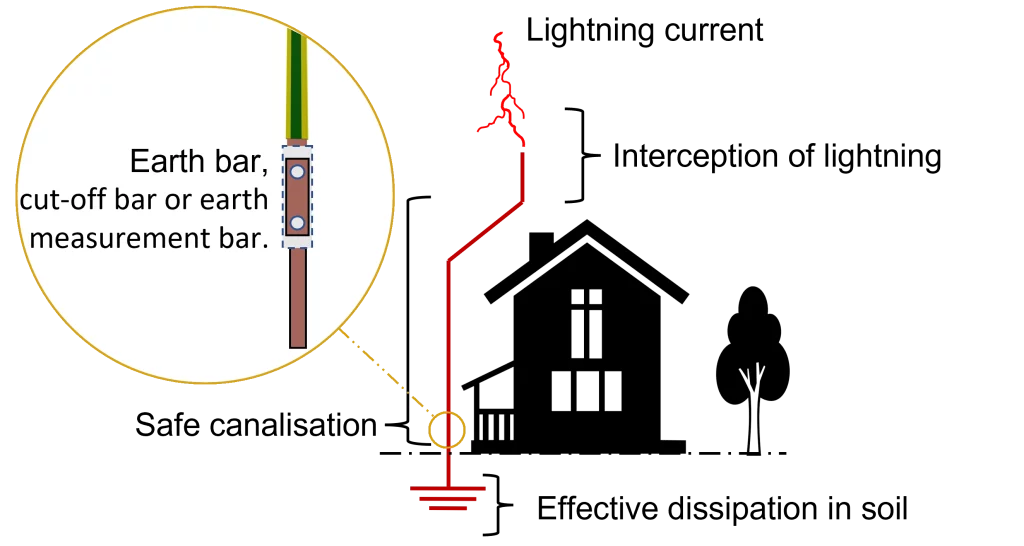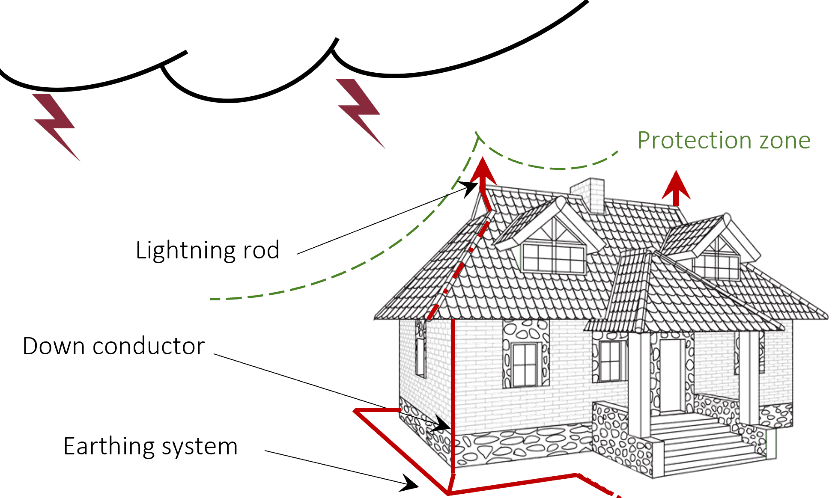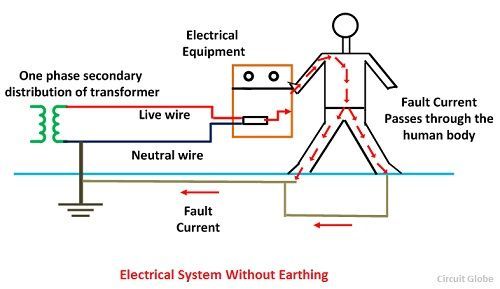Bonding your body to the earth’s surface is a process known as earthing. Additionally, grounding enables the passage of electrons through the land toward your body. You can do this by touching the ground with your bare feet as well as by sitting or lying down on it. However, by utilizing specialized grounding equipment that is made to assist you, Nevertheless, maintaining a connection that mimics the earth’s intrinsic electrical field
In this article, we will discuss its history and, conversely, its theory. Also, we will later move on to its installation method, different types, and functions. However, we will also identify whether it is beneficial to do earthing and other crucial questions with some frequently asked questions.
History
The history of earthing is an ancient therapeutic technique with solid roots in many conventional therapies, including Ayurvedic medicine and traditional Chinese medicine.
In the 1800s
Medical professionals started understanding the therapeutic advantages of being close to the ground in the 1800s. For instance, it was found that individuals who lived close to the ground, such as farmers and rural residents, had better health results than those who did.
In the twentieth century,
At the beginning of the twentieth century, a doctor named George Starr White wrote a book titled “The Household Electrical System.” He highlighted the significance of anchoring the human body to the soil to enhance health.
In the 1960s and 1970s
Numerous scientific studies on the benefits of earthing were carried out in 1960 and 1970. In contrast, including work from Dr. Maurice Bales, the cardiologist discovered individuals who sleep on grounded mattresses. Therefore, it had better circulation and decreased inflammation.
In recent times,
A more recent trend in health and wellness is the idea of “earthing,” which is a natural, all-encompassing approach. Today, various grounding items are on the market, such as grounding flooring, footwear, and grounding sheets. Therefore, all of these are intended to keep users grounded, whether they are at home or on the move,
Theory behind this
The theory behind earthing is that the earth’s surface naturally contains an electrical charge. Therefore, when we come close to it, the earth’s electrons flow into our bodies and balance our electrical potential.
The earth provides a rich source of electrons and has a negative charge. Our bodies take in these electrons when we come into contact with the ground. Similarly, which can assist in scavenging free radicals and lowering inflammatory responses in the body; however, free radicals are unstable molecules that may harm healthy cells and play a role in several health issues. For example, ongoing inflammation, discomfort, and illness
Several health advantages result from this, including better sleep, lowered stress levels, and alleviated inflammation discomfort.
Modern lifestyle theory
Modern lifestyles are thought to disrupt the organic electrical balance of the human body. Although this frequently entails spending extended periods of time inside and donning rubber-soled footwear, this can result in a number of health issues. This equilibrium is said to be restored, as are excellent health and welfare, which are said to be promoted through this. In contrast, which involves re-establishing contact via the earth’s intrinsic electrical field. Although the scientific research on the advantages of this is nevertheless in its early stages, there is rising interest in the practice’s potential therapeutic uses. Furthermore, many individuals have said that adding earthing to their daily routines has favorable impacts.
Types of Earthing
There are several types of earthing. These are written below:
Residential earthing:
This entails connecting a building’s electrical system to the earth to ground it and safeguard people and property from electrical dangers. This is known as residential earthing. However, a grounding rod, a metal rod pushed into the ground, is usually installed and connected to the primary electrical system.
Electronic equipment earthing:
In order to shield electronic devices from surges of electricity and interference, including computers and televisions, the earth must be connected to them.
Earthing for lightning protection:
Lighting protection means installing a system to stop lightning connected to the earth necessary to protect a structure from lightning strikes.
Body earthing:
Enhance the entry of electrons through the earth towards the body. This entails creating direct contact between the body and the ground. This can be accomplished in a number of ways, including by going naked on the surface of the earth, sitting or sleeping on it, or using grounding shoes or mats.
Note:
Most of the study on this subject has focused on the body since it is a form of electrical grounding; nonetheless, it is most frequently linked to health advantages. However, all types of earthing are crucial for enhancing security, safeguarding machinery, and enabling the effective passage of electrical energy.
What is the Function of Earthing?
If an electrical system experiences a malfunction, the purpose of grounding is commonly referred to as earthing. In contrast, it offers a secure pathway for electricity to pass to the ground. Furthermore, it is a crucial safety technique to safeguard people, property, and other objects from electrical risks.
The act of “earthing” an electrical system involves attaching the metal components of machinery and appliances via a conductive wire. Therefore, buried in the foundation or linked to an earth electrode, To help avoid electrical shocks and fires, this wire offers a low-resistance conduit for electrical current to go to the ground. Additionally, it helps lessen electromagnetic interference and static electricity accumulation. However, it may occasionally be mandated by legislation or regulatory requirements. Similarly, to guarantee security in contrast to the dependability of electrical systems.
How was the Earthing Done?
By attaching the metal components of a power system, which includes equipment as well as appliances. In contrast, a conductive wire has been buried in the ground’s soil or linked to a ground electrode. Therefore, referred to as earthing,” it is usually carried out.
The following steps are commonly involved in this process:
- The ground electrode is chosen, and it may be an iron rod, a sheet of metal, or a metal mesh.
- The location and size of the ground electrode are implanted in the earth’s surface. Therefore, these parameters depend on the kind of soil and current and local laws.
- To link the metal components of the electrical wiring that require earthing. However, conductor wire, which might be copper wire, is also used. The ground electrode is next attached to this wire.
- An earth tester is a specialized tool used to measure the conductivity of the earth connection. In the case of an electrical system malfunction, the impedance of the planet’s connection needs to be sufficiently small for adequate current to pass.
- Regular inspections and upkeep are carried out to ensure the earthing system continues to function properly and adheres to regulatory requirements.
Different Methods for Earthing
Different approaches to earthing, or grounding, can be used based on the particular electrical system as well as the demands of local legislation. Here are a few of the most popular techniques:

Plate earthing:
This technique involves burying a metal plate in the ground, often one constructed from copper or galvanized iron. To ensure a strong connection with the earth, the plate must be buried at least 1.2 meters deep in wet soil.
Rod earthing:
This technique involves driving a metal rod into the ground, which is often constructed of copper or iron that has been galvanized. A minimum of 1.8 meters of the length of the rod must be inserted into the ground’s surface at a 45-degree angle.
Pipe earthing:
This technique entails burying a metal pipe, often composed of galvanized iron. The line must be buried vertically in the ground and be at least two meters long.
Strip earthing:
This technique entails burying a piece of metal in the ground, often composed of copper. The strip must be two meters long and at least 1.2 meters deep.
Earth pits:
This technique entails excavating a pit within the earth and filling it with sand, salt, and charcoal. Then, a conductive wire is used to link the metal components of the electrical wiring to the mixture.
Chemical earthing:
This technique fills a borehole with a bentonite and salt solution. The electrical system is then linked to a metal electrode in the borehole.
Note:
The choice of a specific technique is influenced by elements, including the soil’s state, the number of current contaminants to be carried, and local laws. Each approach has benefits and drawbacks. To choose the best method for a given electrical system, speaking with an experienced electrician or electrical engineer is crucial.
Different Components of Earthing
There are different components to this, which are listed below.
Earth electrode:
A conductive element immersed in the ground offers a low-resistance channel for the transmission of electrical current across the system of electricity and the earth, such as a rod of metal, plate, or mesh.
Earth wire:
In the case of an electrical malfunction or surge, a conductor that joins the electrical system with its earth electrode creates a secure conduit for the electricity to pass to the ground.
Earth continuity conductor:
A conductor that links all metallic components of an electrical circuit towards the earth electrode. This conductor offers a low-resistance conduit for current to pass to the ground, lowering the danger of electric shock.
Earth pit:
A ground hole that houses the earth electrode and is filled with salt and charcoal to increase the soil’s conductivity and lessen corrosion.
Earthing clamp:
A mechanism that establishes a safe and trustworthy connection between the earth wire and the earth electrode via the earth continuity conductor. Therefore, together, these elements form a powerful earthing system that safeguards people and property from electrical risks and guarantees the efficient and safe operation of electrical systems.
Advantages of Earthing
There are several possible benefits to grounding, including:
Reduced inflammation
It is thought that earthing has properties that reduce inflammation. Therefore, this helps lessen pain, swelling, and various other inflammation-related symptoms.
Improved blood flow
Improved blood flow and circulation through this process may lower the likelihood of cardiovascular disease and other health issues.
Improved sleep
It has been demonstrated that this process can assist in regulating circadian cycles, improving sleep quality, and improving general health and wellness.
Reduced stress
It is believed that earthing has a relaxing impact on the neural system. Therefore, assisting in lowering tension, anxiety, and stress.
Improved immune function
The immune system’s capacity to resist infections and sickness is thought to be enhanced by earthing.
Protection from electromagnetic radiation
This process can shield the body from the harmful impacts of electromagnetic radiation. Therefore, it is known to be sometimes released by modern gadgets like computers and cell phones.
Improved wound healing
It has been demonstrated that earthing speeds up the healing process of wounds and injuries. Perhaps as a result of its immune-boosting and anti-inflammatory properties.
However
While further study is required to completely comprehend the advantages of it, many individuals have said that doing so positively impacts their everyday lives.
Is Earthing Beneficial?
Even though some evidence shows that earthing might offer health advantages, further study is required to understand its potential consequences properly. In addition to other benefits, several studies have suggested that grounded may have anti-inflammatory, immune-suppressant, and stress-reducing effects. To corroborate these results, further study is required, as many of these investigations are small and have other limitations. Despite this, many individuals who earth themselves claim to experience benefits, including less pain, better sleep, and more vitality. Most individuals are typically seen as being safe while doing this process. However, those with particular medical concerns, such as cardiac issues, should consult a healthcare professional before beginning this practice.
Ultimately, whether or not earthing is advantageous may depend on personal circumstances. Therefore, such as general health and lifestyle choices. While there isn’t enough information to conclude its advantages, some people may benefit from adopting it into their healthy lifestyle.
FAQs
What is grounding?
A conductive part of a power system is connected to the ground using the word “earthing.” Therefore, this also refers to providing a low-resistance conduit for electrical current and preventing electrical risks.
What are the two major types of earthing?
Plate earthing and pipe earthing are the two main forms of it.
What is the earthing formula?
The formula that determines the resistance underlying the earth electrode is R = (/2L) * ln(4L/d). where R is the one that powers the resistance. Therefore, it is the conductivity of that soil, L is the electrode’s length, and d is the electrode’s diameter.
How do I start earthing?
Employing a grounding clamp or similar device, one can begin earthing by connecting a conductive part of an electricity system. In addition, include a rod of metal or wire with the earth.
What are the basic needs of earthing?
The fundamental requirements for it involve a conducting earth electrode. However, this includes a metal rod with a plate, a grounding wire, either conductor or conductor and any grounding clamp or connection.
What is an example of earthing?
An illustration of this is utilizing a grounding wire as well as a clamp to connect a computer’s metal chassis. In addition to, a ground rod to safeguard against electrical shocks and guarantee the computer’s safe functioning.

Click Here: If you also want to learn about the Saudi Futuristic City “Neom“.
Conclusion:
Earthing is a process of connecting a conductive part of a power system to the solid earth. It has been found to have anti-inflammatory, immune-boosting, and stress-reducing effects. An efficient system includes a ground electrode, earth cable, earth continuity conductor, earth pit, and an earthing clamp. Plate earthing and pipe earthing are the two main methods of this process. However, the resistance of an earth electrode can be determined using their formula. Before beginning this practice, people with specific medical issues should consult a healthcare professional. Ultimately, whether or not this process is advantageous may depend on personal circumstances.
Overall, earthing is a crucial procedure that may aid in lowering the chance of electrical hazards. Therefore, enhancing health and wellness, promoting safety, and effectively operating electrical equipment. While more study is required to comprehend the possible advantages of this grounding process fully. However, certain people may benefit from adopting this practice as part of a healthy lifestyle.

